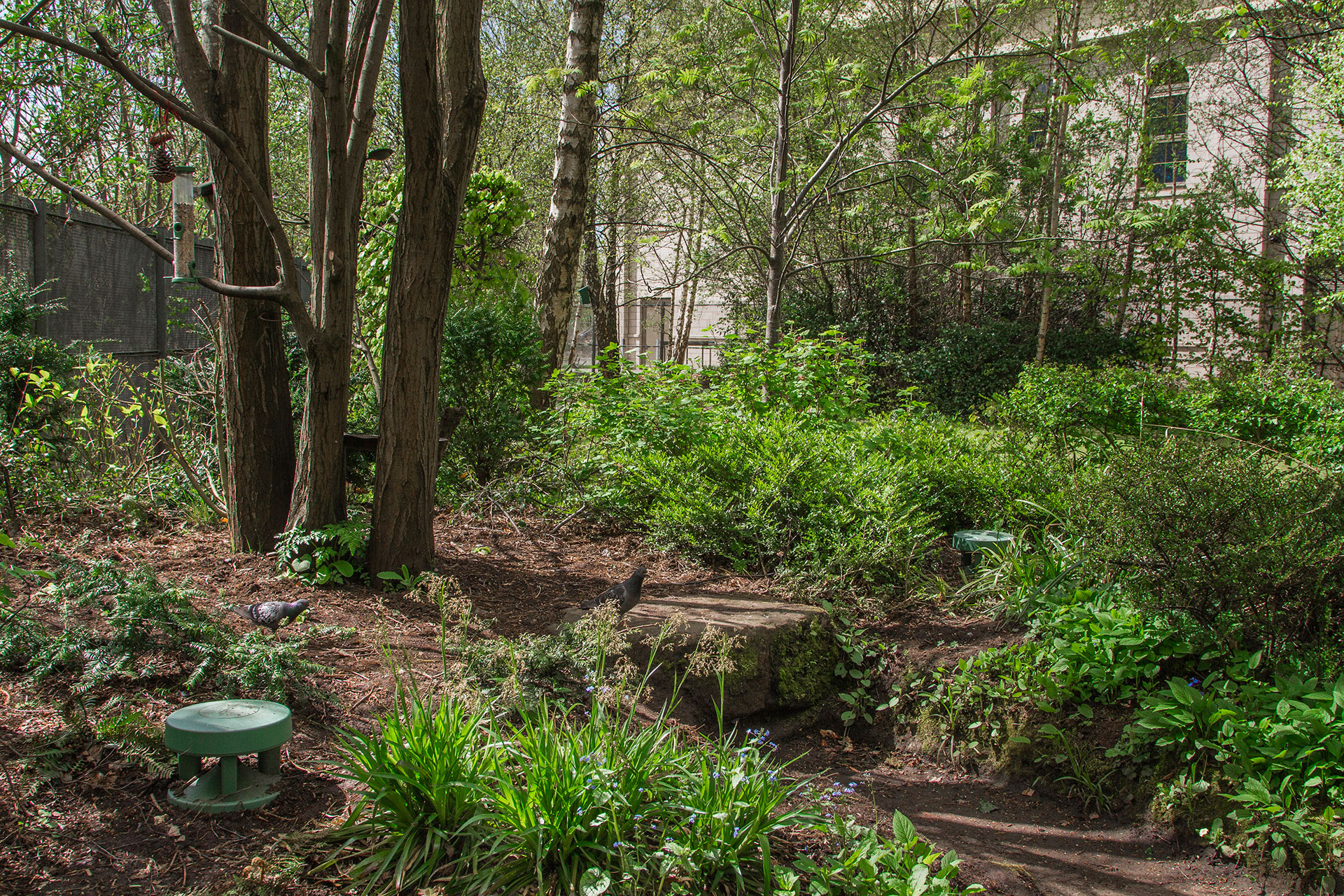This work was commissioned for the show Bone Meal at the Hidden Gardens in Glasgow and responds to the setting of the community garden. The title of the work comes from a devotional song by the medieval abbess, Hildegard of Bingen; one of the earliest named female composers in western music. As well as being a composer, she was a mystic and her music and lyrics are shockingly lush and sensuous.
This work layers the lusciousness of Bingen’s music with more unsettling and unexpected sounds; electronic pulses, animals howling. Excerpts of Hildegard of Bingen’s music float in and out of the track, alongside a slowed down cut of the opening bars of Patsy Cline’s ‘Crazy.‘ On intervals we hear a phone ringing, and when the disembodied voice on the other side answers it is to address calling to ask "What can I do with it? Ingest it? Purchase it? Liberate it?” The sound of children chanting the names of flowers jarringly cut to the same group chanting, “Warship! Dagger!” The audio is cut from the film Black Narcissus, about a community of nuns in the Himalayas who are driven to question their austere lives by the sensuality of the landscape around them. The work creates a push and pull between an affirmation of the erotic and its denial, between violent rupture and the sublime.
This work layers the lusciousness of Bingen’s music with more unsettling and unexpected sounds; electronic pulses, animals howling. Excerpts of Hildegard of Bingen’s music float in and out of the track, alongside a slowed down cut of the opening bars of Patsy Cline’s ‘Crazy.‘ On intervals we hear a phone ringing, and when the disembodied voice on the other side answers it is to address calling to ask "What can I do with it? Ingest it? Purchase it? Liberate it?” The sound of children chanting the names of flowers jarringly cut to the same group chanting, “Warship! Dagger!” The audio is cut from the film Black Narcissus, about a community of nuns in the Himalayas who are driven to question their austere lives by the sensuality of the landscape around them. The work creates a push and pull between an affirmation of the erotic and its denial, between violent rupture and the sublime.



